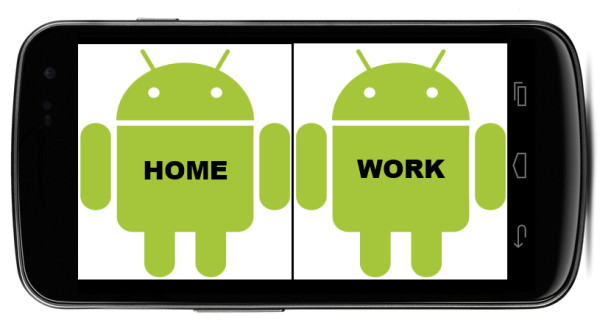Affiliate links on Android Authority may earn us a commission. Learn more.
Phones that can run two operating systems simultaneously coming by the end of 2013

The technological wizardry which allows this to happen is called a hypervisor and they come in two basic types. The first flavor, cunningly called Type 1, installs a bare metal hypervisor on a phone and can run multiple operating systems. A bare metal hypervisor is basically a lean, mean cut-down OS with no user interface. It handles all the CPU and GPU stuff and lets the actual OS handle the rest. A phone with a bare metal hypervisor boots both operating systems and they run simultaneously. The user can switch back and forth as they please and if a phone call is received on one OS then the phone will automatically switch to that OS so the user can answer the call.
The downside of a type 1 hypervisor is that it needs very specific help from the CPU and from the CPU manufacturers (in terms of drivers and the optimization of battery life and graphics). However, from a security standpoint, it is seen as the most secure as the two operating systems don’t interact at all and one OS doesn’t even know that the other one exists. But to succeed in big businesses, special phone management software needs to be installed on the corporate network and it is this additional eco-system support that could be the downfall of the bare metal approach.
The second flavor, unsurprisingly called Type 2, runs one operating system on top of the native operating system. You may be familiar with this on your PC using VirtualBox or VMware to run a second OS in a special window. It is particularly helpful for Mac or Linux users who also need access to Windows. The same principle can be applied to a smartphone. In this instance you have your standard Android phone (but with lots of memory) and you run the virtualization app which starts a second copy of Android that is tailored to your work environment. The downside is that all low level calls made by the second (guest) OS need to go through the host copy of Android and this does present a security risk.
Like Betamax and VHS, or HD DVD and Blu-Ray, one technology will eventually dominate in the mobile sector. In the mean time ARM is working to create CPUs with the right hardware support for virtualization and corporate handset makers are looking at just how much memory they will need to add to their phones!
Do you like the idea of having a phone that runs two copies of Android? Please leave a comment below and let me know!